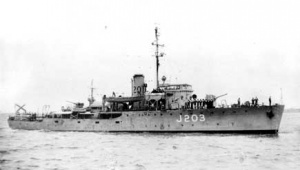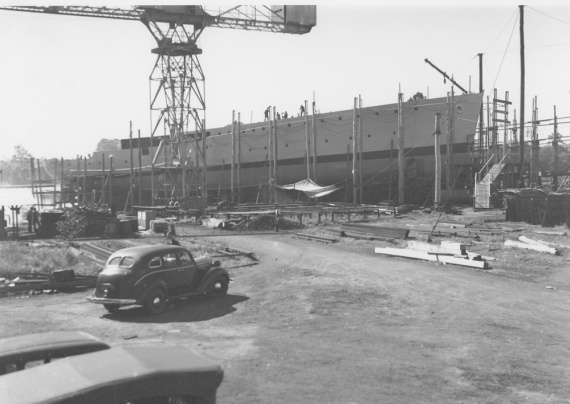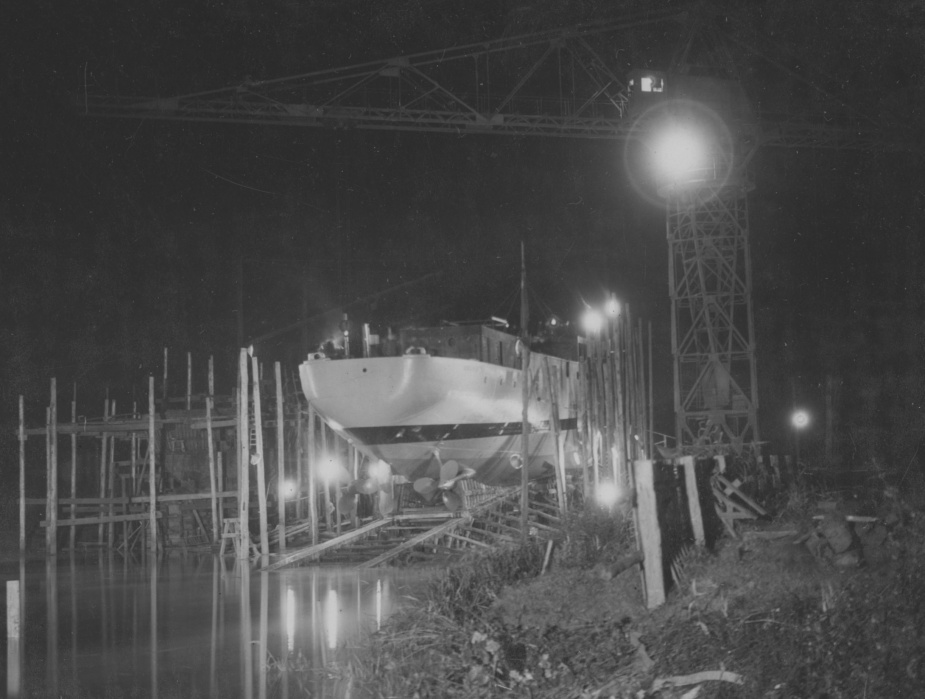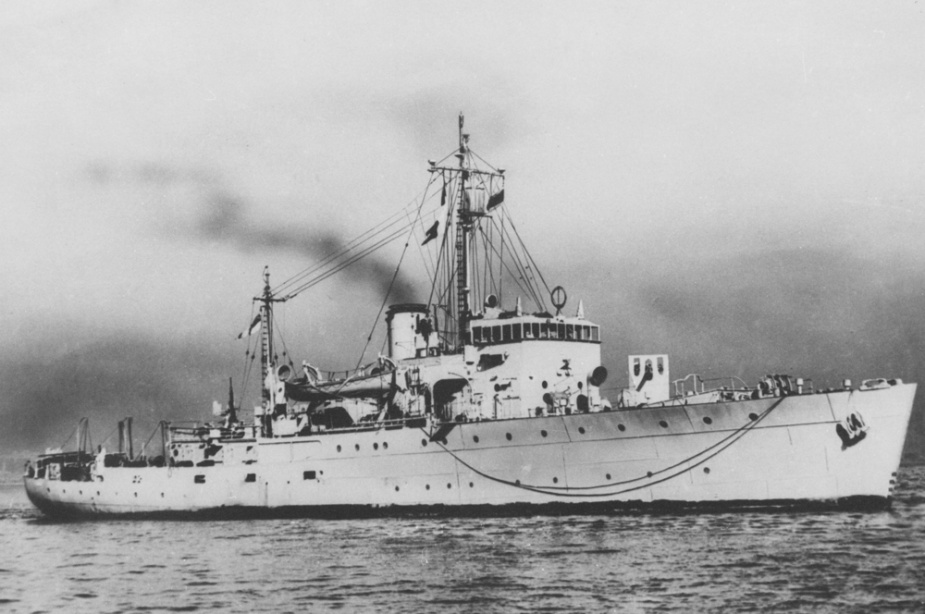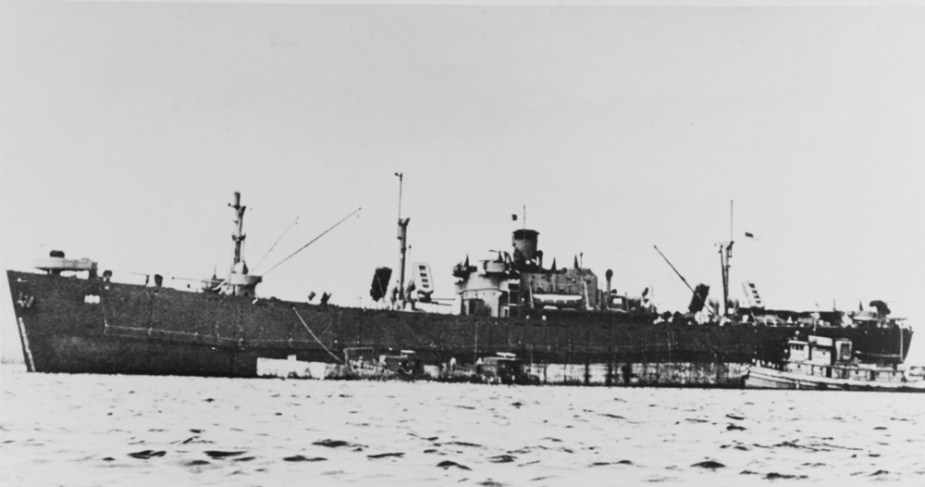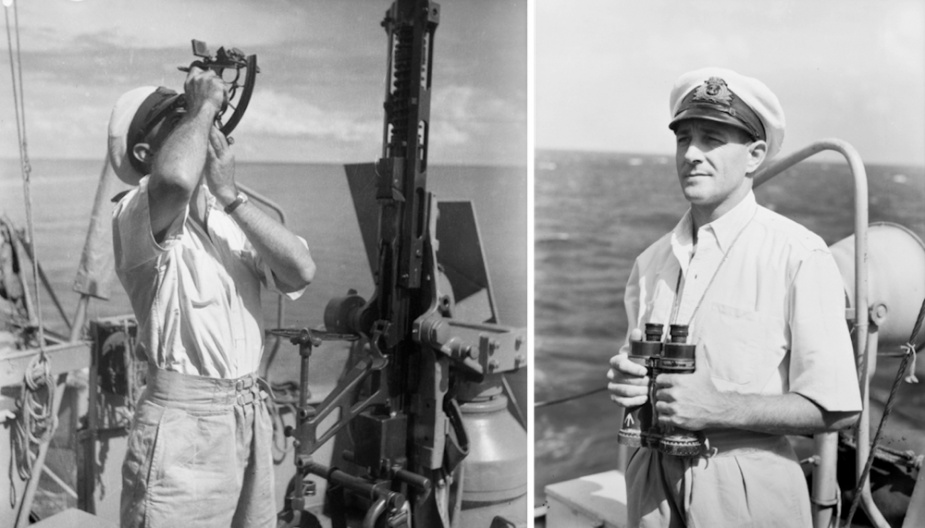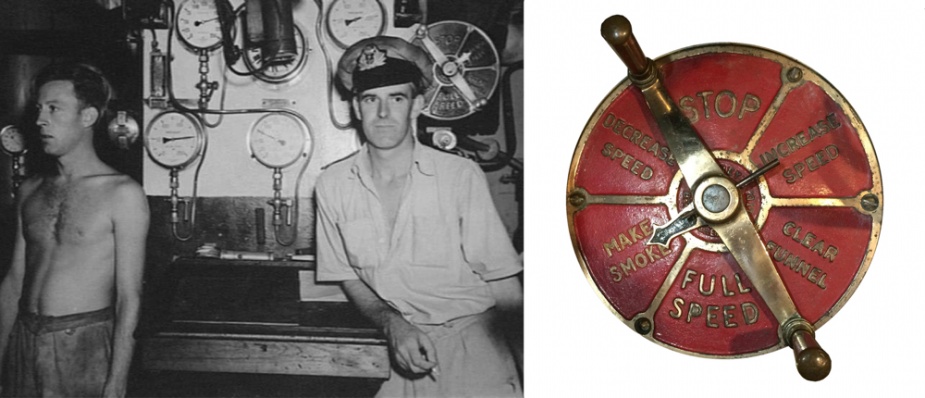HMAS Rockhampton
| Class |
Bathurst Class |
|---|---|
| Type |
Australian Minesweeper |
| Pennant |
J203 |
| Builder |
Walkers Ltd, Maryborough |
| Laid Down |
6 November 1940 |
| Launched |
26 June 1940 |
| Launched by |
Mrs Walker, wife of the Chairman of Directors, Walkers Ltd |
| Commissioned |
21 January 1942 |
| Decommissioned |
5 August 1946 |
| Dimensions & Displacement | |
| Displacement | 650 tons |
| Length | 186 feet |
| Beam | 31 feet 1.5 inches |
| Draught | 8 feet 6 inches |
| Performance | |
| Speed | 15 knots |
| Propulsion | |
| Machinery | Triple expansion, 2 shafts |
| Horsepower | 1,750 |
| Armament | |
| Guns | 1 x 4-inch gun |
| Other Armament |
|
| Awards | |
| Battle Honours | |

HMAS Rockhampton was one of sixty Australian Minesweepers (commonly known as corvettes) built during World War II in Australian shipyards as part of the Commonwealth Government’s wartime ship building programme. Twenty were built on Admiralty order but manned and commissioned by the Royal Australian Navy. Thirty six ships (including Rockhampton) were built for the Royal Australian Navy and four for the Royal Indian Navy.
HMAS Rockhampton commissioned at Maryborough on 21 January 1942 under the command of Lieutenant Robert Thomas Salmon RANR(S).
Rockhampton began her operational service as a convoy escort on Australia’s eastern sea board. In June 1942 convoys were routinely under escort following a series of successful attacks by Japanese submarines off the Australian coast. Rockhampton, in company with USS Selfridge, escorted the first ‘GP’ convoy between Sydney and Brisbane. She also escorted one convoy to Noumea in September 1942.
In November 1942, two ships in a convoy under the escort of Rockhampton, collided. One of the ships, the SS Zvir, sank and the survivors had to be rescued. On another occasion an abandoned Sikorsky plane was sighted and a search made for the crew - it was later learned that they were safe.
In October 1943 Lieutenant Commander Alan J Travis, RAN assumed command of Rockhampton.
Under Travis’ command, Rockhampton continued east coast convoy escort duties until January 1944 at which time she proceeded to the New Guinea operational area, escorting convoys from north Queensland ports to Port Moresby, Milne Bay, Langemak, Hollandia and Morotai. Those duties ceased in March 1944 and Rockhampton returned to Sydney on 4 April before proceeding to Adelaide for a refit between 12 April-20 May.
Rockhampton resumed service in New Guinea waters in June 1944, escorting convoys between the ports of Hollandia, Langemak, Madang and Morotai. In July 1944 she went to the assistance of USS Porcupine, an Armadillo Class tanker, which had run aground near Tami Island south east of Finschhafen. After a strenuous tussle the vessel was eventually freed.
In September 1944 Lieutenant GJA Ashley-Brown, RAN was appointed in command before being relieved by Lieutenant Commander Herbert Kennedy Dwyer, RANR.
During the first half of 1945, Rockhampton was operating predominately between Morotai and Biak before briefly returning to Australian waters in June.
On 30-31 August 1945 she visited her namesake city, Rockhampton, Queensland, where she was met by His Worship the Mayor, Alderman H Jeffries and Aldermen of the Rockhampton City Council. Representatives of the Rockhampton Patriotic and Public Bodies were also in attendance.
The visit proved popular with both the citizens of Rockhampton and the corvette’s ship’s company. In a letter home from Ordinary Seaman Gill Wahlquist to his father in September 1945 he recorded:
We were cheered and shown around the city as if we were heroes instead of just sailors off a corvette. As we stepped on to the wharf we were each given a souvenir booklet printed specially to commemorate our visit.
Rockhampton returned to New Guinea in September 1945 for further service in the Morotai area.
In September 1945, following the cessation of hostilities, Rockhampton in company with her sister ships Bowen, Glenelg, Junee and Latrobe evacuated Dutch and Indonesian internees and prisoners of war from Menado, northern Celebes disembarking them at Morotai. The rescued party included 145 children, 111 women and 65 men.
The effort of Rockhampton’s crew during the evacuation was recognised by Captain H Ross Macourt of the Australian Army Medical Corps who recorded the following in official correspondence to the Commanding Officer of the 2/9th Australian General Hospital:
Dear Sir,
I wish to express my appreciation and gratitude to the Captain, Officers and crew of HMAS Rockhampton for their magnificent effort in helping me bring out of the Celebes nearly ninety Dutch internees. As you know there were mainly women and children and 50% were hospital cases.
I expected co-operation from the ship but not the wonderful help that was given. A small ship was made as comfortable for my patients as humanly possible. Sailors, stokers, etc, came off duty only voluntarily and unselfishly give up all their sleeping hours to carry out the unaccustomed and not very pleasant chores necessary in nursing sick. Without being asked, they carried bed pans, washed patients and were at the beck and call of all. The cooks need special mention as they never went off duty - cooked the special diets I had asked from, and then acted as Mess Stewards until all were fed.
Movements Control congratulated me on our disembarkation at Morotai. Such congratulations, I would like to convey to Officers and crew, for it was they who carried out the smooth disembarkation of sick, well and their luggage.
As one of the sailors from the ship remarked to me “It is the best job the ship has ever done.” I would like to put another meaning on this phrase and answer “No ship’s crew could have done a better or more unselfish job.”
I would be very pleased if you would convey my thanks to H.M.A.S “Rockhampton” for making a very difficult job possible.
(Signed) H. R. Macourte. Capt.
AAMC
Rockhampton was also one of the Australian warships to support the occupation of Ambon following the surrender of Japanese forces on the island.
On 8 October 1945 Rockhampton arrived at Tenate in the Halmaheras with the Sultan of Ternate on board as a passenger. The proclamation of the surrender of the Japanese was read and all of the ship’s officers were entertained by the Sultan at lunch and a dance.
Rockhampton departed Morotai on 23 October 1945 for the return passage to Australia, returning to Sydney, via Townsville and Brisbane, on 13 November.
On her return to Australia Rockhampton joined the 20th Minesweeping Flotilla and took part in post war minesweeping operations off the Australian east coast, Bass Strait and later at Hobart. This was followed by survey duties in South Australia before she departed Adelaide on 15 April 1946 for passage to Sydney, where she arrived on 29 April 1946.
Rockhampton paid off into Reserve at Sydney on 5 August 1946, having steamed some 176,077 miles. She was sold as scrap to Kino Shito (Australia) Pty Ltd in January 1961.
Note: This video is hosted on YouTube. Department of Defence users will not be able to view this video on the Defence Protected Network.
This cine film has been placed online as part of the Sea Power Centre - Australia’s ongoing archival digitisation program.
Further Reading
- The Corvettes: Forgotten Ships of the Royal Australian Navy, by Iris Nesdale - published by the author, October, 1982.
- Corvettes - Little Ships for Big Men, by Frank B Walker - published by Kingfisher Press, NSW, 1996.
- The Australian Centenary History of Defence Volume III, The Royal Australian Navy, edited by David Stevens, Oxford University Press, South Melbourne, Victoria, Australia, 2001.

